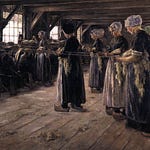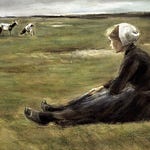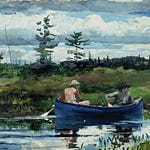In part one of this essay I wrote about our mindset, perspective, and beliefs around being prepared for what may be coming. In this essay, I will get into the details of what that looks like in our lives. I will divvy up the information into six general categories: energy, food and water, first aid/medicines, clothing and shelter, tools, and community.
As I wrote in part one of this essay, our approach to building resilience to what may come centres around old school approaches for the most part. There’s a few higher tech things we use now in order to prepare for tomorrow (thinking of our freeze dryer here), but for the most part, we assume that should supply chains, systems, and/or governments start to crumble, we will be returning to the lamplight age.
There’s the other perspective, of turning to solar systems and other energy alternatives, but from our perspective, the cost of implementing these systems, along with their dependency on batteries, and the impacts of mining and production that these energy systems demand, makes them unappealing in our situation. Instead of investing in expensive systems that will only draw out energy use for a little longer, we have invested our dollars in old tools and structures that will allow us to live with relative ease, albeit without our blowdryer and washing machine. We’re okay with that.

Energy
Let’s say something has happened and the electricity is no longer. There’s a few possibilities here. First, the question must be asked if this is short term or long term situation. Short term, we have a generator hardwired in. That covers off that as far as freezers and water pumps and heat is concerned. But let’s say it’s long term - like weeks or months. Then what?
Well, first thing that would happen is we would be emptying our freezers if it was the warmer months. If it was cold outside, we wouldn’t touch them. Our freezers are outside and it’s cold here so that buys us time. I will write more about what we would do with that summer freezer rescue under the food category.
Now for our house. We live in a climate of freezing winters and stifling summers. Our house is an old house. She’s seen the days when wires didn’t run through her walls. She was born in a time when indoor plumbing and electricity didn’t exist and to that time she will return. This can be a bit tricky and not every house is likely a candidate for such things. We have two wood stoves in our house. One is for heat and the other is a cook stove which also gives us heat. We’re considering buying a third for a part of the house that turns a corner and gets a little chilly. The stoves are situated so that











